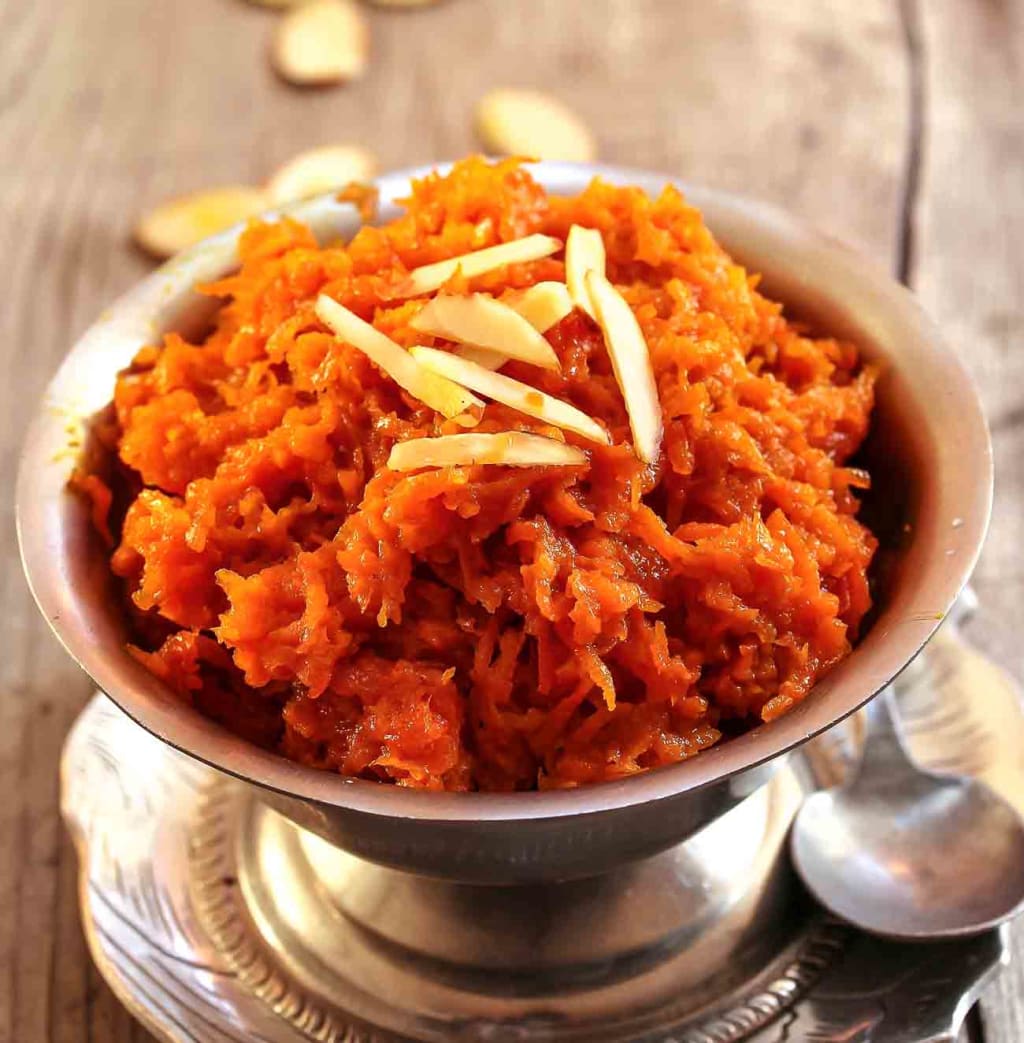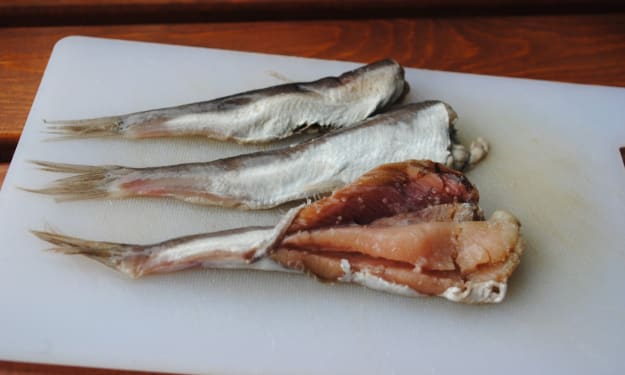
Carrot halwa, also known as Gajar ka Halwa, is a popular dessert in India that is made from grated carrots, milk, sugar, ghee (clarified butter), and a variety of nuts and spices. It is a delicious and healthy dessert that can be enjoyed by all, and is often served during festive occasions like Diwali or Holi.
Here is a recipe for carrot halwa that serves 4-6 people:
Ingredients:
1. 1 kg of fresh carrots, grated
2. 1 liter of milk
3. 1 cup of sugar
4. 1 cup of ghee
5. 1 tsp of cardamom powder
6. A handful of chopped nuts (such as cashews, almonds, and pistachios)
Instructions:
1. Wash and peel the carrots. Grate them finely using a grater or food processor.
2. In a large heavy-bottomed pan or wok, add 2 tbsp of ghee and the grated carrots. Cook the carrots over medium heat for 5-7 minutes, stirring occasionally.
3. Add the milk to the pan and bring it to a boil. Lower the heat to a simmer and cook the carrots in the milk for around 40-50 minutes. Keep stirring occasionally to ensure the milk doesn't burn.
4. Once the milk has evaporated and the carrots have cooked, add the sugar to the pan and stir well. Cook for another 10-15 minutes or until the sugar has dissolved and the mixture thickens.
5. In a separate pan, heat the remaining ghee over medium heat. Add the chopped nuts and stir well. Fry the nuts for 1-2 minutes or until they turn golden brown.
6. Add the fried nuts and cardamom powder to the carrot mixture and mix well. Cook for another 2-3 minutes.
7. Serve the carrot halwa hot, garnished with some more chopped nuts.
Tips:
1. You can adjust the amount of sugar and ghee used according to your preference. You can also use a sugar substitute like honey or jaggery to make the dessert healthier.
2. To save time, you can also use canned sweetened condensed milk instead of regular milk.
3. To add more flavor to the dish, you can also add some saffron strands or rose water.
4. If you want a creamier texture, you can also add some khoya (mawa) to the dish.
Carrot halwa is a delicious dessert that can be enjoyed by everyone. It is also a great way to use up extra carrots in your kitchen. Try this recipe at home and impress your family and friends with your cooking skills!
Himom powder
6. A handful of chopped nuts (such as cashews, almonds, and pistachios)
Instructions:
1. Wash and peel the carrots. Grate them finely using a grater or food processor.
2. In a large heavy-bottomed pan or wok, add 2 tbsp of ghee and the grated carrots. Cook the carrots over medium heat for 5-7 minutes, stirring occasionally.
3. Add the milk to the pan and bring it to a boil. Lower the heat to a simmer and cook the carrots in the milk for around 40-50 minutes. Keep stirring occasionally to ensure the milk doesn't burn.
4. Once the milk has evaporated and the carrots have cooked, add the sugar to the pan and stir well. Cook for another 10-15 minutes or until the sugar has dissolved and the mixture thickens.
5. In a separate pan, heat the remaining ghee over medium heat. Add the chopped nuts and stir well. Fry the nuts for 1-2 minutes or until they turn golden brown.
6. Add the fried nuts and cardamom powder to the carrot mixture and mix well. Cook for another 2-3 minutes.
7. Serve the carrot halwa hot, garnished with some more chopped nuts.
Tips:
1. You can adjust the amount of sugar and ghee used according to your preference. You can also use a sugar substitute like honey or jaggery to make the dessert healthier.
2. To save time, you can also use canned sweetened condensed milk instead of regular milk.
3. To add more flavor to the dish, you can also add some saffron strands or rose water.
4. If you want a creamier texture, you can also add some khoya (mawa) to the dish.
Carrot halwa is a delicious dessert that can be enjoyed by everyone. It is also a great way to use up extra carrots in your kitchen. Try this recipe at home and impress your family and friends with your cooking skills!
History of carrot halwa
The origins of carrot halwa are not entirely clear, but it is believed to have been developed in the Mughal era, during the 16th century. The Mughals were known for their love of rich, indulgent foods, and it's believed that they brought the concept of halwa to India from Central Asia. Halwa is a type of sweet dessert that is popular throughout the Middle East, North Africa, and Asia, and it is typically made by cooking grains, vegetables, or fruits in milk or water and adding sugar and spices.
Carrots were not a native vegetable to India, but they were introduced to the country by the Dutch during the 17th century. It's believed that the combination of carrots and halwa was developed by Punjabi cooks, who were known for their creativity in the kitchen. Carrots were readily available in the region, and they were combined with milk, sugar, and ghee to create a rich, creamy, and flavorful dessert.
Carrot halwa quickly became a popular dessert throughout India, and it is now a staple in many Indian households. It is often served at festivals, weddings, and other special occasions, and it is also a popular street food in many parts of the country. Over time, many variations of carrot halwa have been developed, with some recipes incorporating ingredients like condensed milk, khoya (milk solids), and even chocolate.
Today, carrot halwa is enjoyed not just in India but also in many other parts of the world. It has become a popular dessert in Indian restaurants and is also a favorite of many people who are not of Indian descent. With its rich, creamy texture and sweet, comforting flavor, carrot halwa continues to be a beloved dessert that is enjoyed by people of all backgrounds.
About the Creator
Enjoyed the story? Support the Creator.
Subscribe for free to receive all their stories in your feed. You could also pledge your support or give them a one-off tip, letting them know you appreciate their work.





Comments
There are no comments for this story
Be the first to respond and start the conversation.